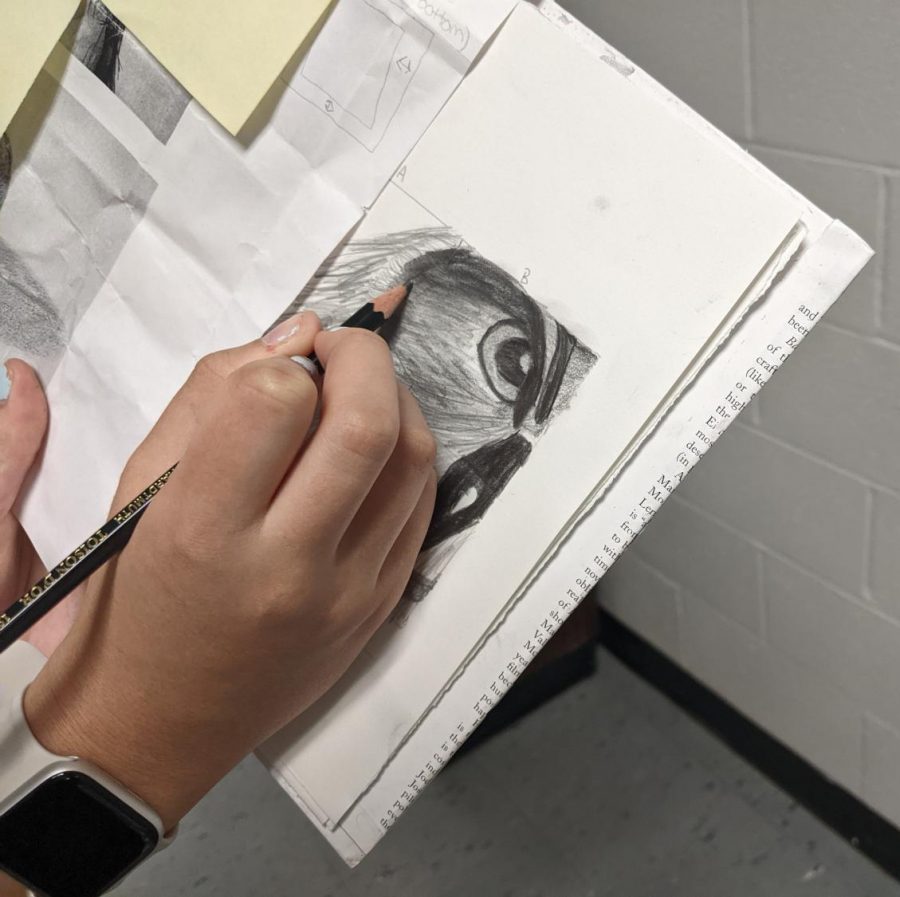Creativity: Undervalued Success of Pandemic
December 6, 2021
Creativity blossomed during an otherwise stifling pandemic, helping individuals through the worst of times.
Macarons were prepared, baked, tossed out, and crafted again. Rooms, homes, and outside patios were reworked. We gardened, painted, wrote, read, and relaxed. Here’s yet another part of our post-quarantine world that’s hard to address: Why has it taken students a global pandemic to discover their worlds outside of never-ending checklists and take hold of them?
While asking anyone “What have you enjoyed about the pandemic?” is a rather puzzling question, it renders similar answers: “I had time to do things that I loved,” or “I tried new activities,” or “I became more creative.” However, it proves the quarantine allowed a few fortunate ones to relax. These answers only further the consensus that the pandemic has presented us with opportunities to initiate change everywhere.
During the mundane days of our first quarantine all the way to now, there is no doubt there has been an overall decrease in morale. What has happened in the past eighteen months has caused more hysteria in the world in less than two years than it seemed possible to witness in all of our four high school years. And in response to the despair, certain tasks felt more draining, less important, or unreasonably stressful. It was necessary to take a step back and to look inwards at what was worth our time. As a result of this introspection, creativity flourished.
The surplus of time prompted students feeling bored, so many picked up a pen, went outside, or started being artistic. Creativity happened in one way or another for a countless number of people stuck in the pandemic. Students often felt that it was the ability to shift from a “school mentality” into a focus on themselves or even something more “long term” that prompted them to start a creative project.
This realization, that many lean on creativity in times of duress, should be extremely helpful for our world when looking to maintain a positive mood and lower stress levels. An entire generation has just experienced the effects of what happens when a crisis occurs, and the reality we all shared was that it was almost instinctive to fill the time with creativity in different ways. An American Psychological Association study shows that a person being consistently creative “reported feeling happy and active”. This virtuous cycle of creativity and positive emotion is important to keep in mind as we head back into an in-person school year. When we place on our masks each morning that “school mentality” is switching back on. A checklist may appear in your mind, and the time spent creating in one way or another – separate from a deadline – falls in importance.
Realize that we don’t have to just reminisce on days of relaxation and passion. Ignoring the illumination that creativity brought amidst all the hysteria is ignoring our opportunity for change. Embrace the instinct to be creative, even in small amounts. There is no longer enough time to build ourselves a desk, paint all day, or perfect a recipe. That will possibly never be realistic again for an E. O. student. But, consider that favorite piece of your unique quarantine routine, something that separates you from the Canvas app, the thing that sparks the innate feeling to create. That passion will carry you through this year – the checklists, the deadlines – and, hopefully, the impact of this change in daily routine within our generation will lead to a happier future.
